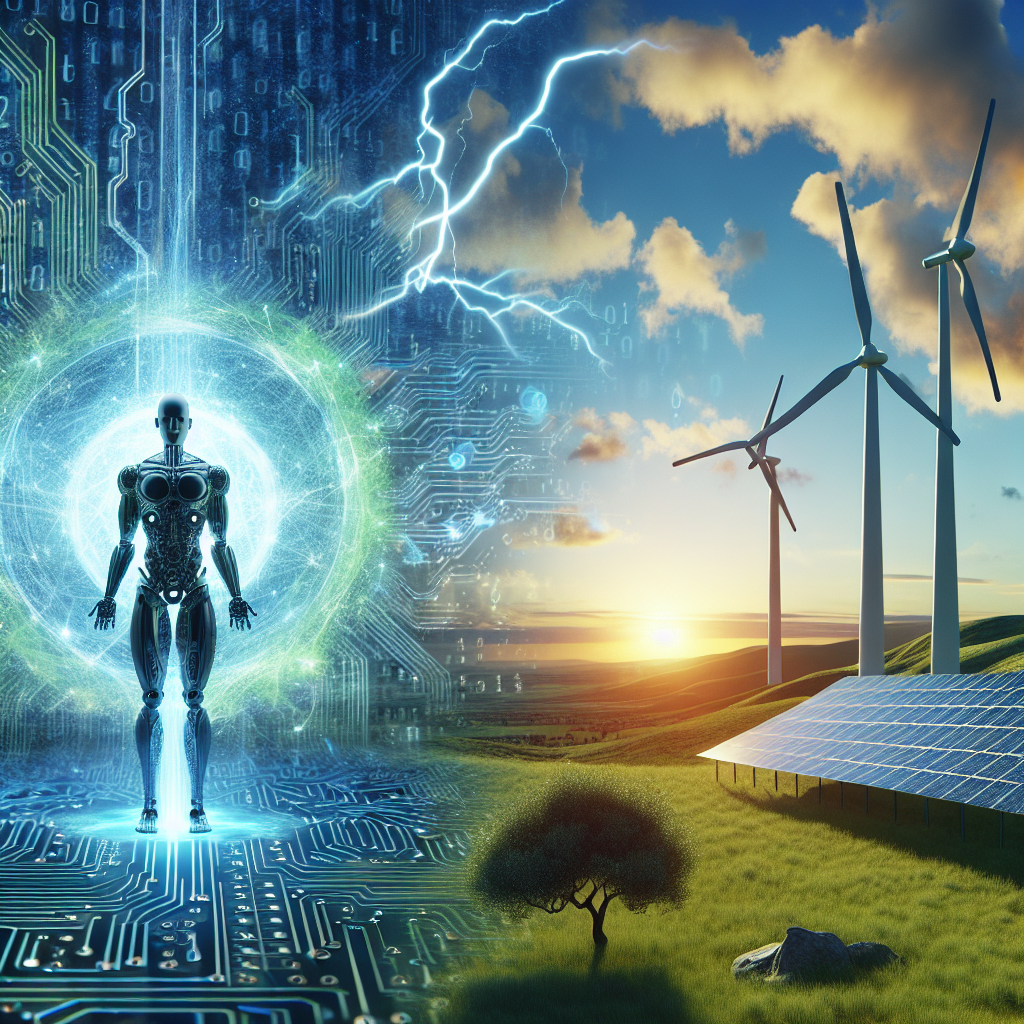The Role of AI in Revolutionizing Renewable Energy
In recent years, there has been a growing interest in renewable energy sources as a solution to the environmental and climate challenges facing the world. Renewable energy, such as solar, wind, and hydro power, offers a cleaner and more sustainable alternative to fossil fuels. However, the integration of renewable energy sources into the existing power grid presents a number of challenges, including the intermittent nature of these sources and the need to balance supply and demand in real-time.
This is where artificial intelligence (AI) comes in. AI technologies, such as machine learning and predictive analytics, can play a crucial role in optimizing the performance and efficiency of renewable energy systems. By harnessing the power of AI, renewable energy developers and operators can improve forecasting accuracy, optimize energy production, and reduce operational costs. In this article, we will explore the ways in which AI is revolutionizing the renewable energy industry and driving the transition towards a more sustainable future.
1. Forecasting and Predictive Analytics
One of the key challenges facing renewable energy systems is the variability of energy production. Solar and wind power, for example, are dependent on weather conditions and can fluctuate throughout the day. This makes it difficult to predict energy production and plan for future demand. AI technologies can help address this challenge by improving forecasting accuracy through advanced predictive analytics.
By analyzing historical data, weather patterns, and other relevant factors, AI algorithms can generate more accurate predictions of energy production. This enables renewable energy operators to better anticipate fluctuations in supply and demand, optimize energy storage and distribution, and reduce reliance on fossil fuels during periods of low renewable energy production. Improved forecasting also helps to maximize the value of renewable energy assets by ensuring that energy is generated and sold at the most opportune times.
2. Optimization of Energy Production
AI technologies can also play a crucial role in optimizing the performance of renewable energy systems. By analyzing real-time data from sensors and monitoring devices, AI algorithms can identify opportunities to increase energy production, reduce downtime, and improve overall efficiency. For example, AI-powered control systems can adjust the angle of solar panels or the pitch of wind turbines to maximize energy output based on current weather conditions.
AI can also optimize the operation of energy storage systems, such as batteries, by predicting when to store or release energy to maximize efficiency and reduce costs. By continuously monitoring and analyzing data, AI algorithms can identify patterns and trends that human operators may overlook, leading to more informed decision-making and improved performance.
3. Grid Management and Demand Response
Another area where AI is revolutionizing renewable energy is in grid management and demand response. As more renewable energy sources are integrated into the power grid, the need for real-time monitoring and control becomes increasingly important. AI technologies can help grid operators manage the flow of energy, balance supply and demand, and prevent blackouts or grid instability.
AI-powered demand response systems can also help reduce energy consumption during peak periods by automatically adjusting thermostats, lighting, and other appliances in response to changing energy prices or grid conditions. By optimizing energy use and reducing peak demand, AI can help lower electricity costs for consumers and reduce the need for expensive peak power plants.
Frequently Asked Questions (FAQs)
Q: How is AI being used in the renewable energy industry?
A: AI is being used in the renewable energy industry in a variety of ways, including forecasting and predictive analytics, optimization of energy production, and grid management. AI technologies can help improve the efficiency and performance of renewable energy systems, reduce operational costs, and optimize energy storage and distribution.
Q: Can AI help reduce the cost of renewable energy?
A: Yes, AI can help reduce the cost of renewable energy by improving forecasting accuracy, optimizing energy production, and reducing operational costs. By maximizing the efficiency of renewable energy systems, AI technologies can help lower the overall cost of energy production and make renewable energy more competitive with fossil fuels.
Q: How is AI being used to address the variability of renewable energy sources?
A: AI is being used to address the variability of renewable energy sources by improving forecasting accuracy, optimizing energy production, and balancing supply and demand in real-time. By analyzing historical data, weather patterns, and other relevant factors, AI algorithms can help predict energy production and optimize the performance of renewable energy systems.
Q: What are the benefits of using AI in the renewable energy industry?
A: The benefits of using AI in the renewable energy industry include improved forecasting accuracy, optimized energy production, reduced operational costs, and increased efficiency. AI technologies can help maximize the value of renewable energy assets, reduce reliance on fossil fuels, and drive the transition towards a more sustainable energy future.
In conclusion, AI technologies have the potential to revolutionize the renewable energy industry and drive the transition towards a more sustainable and efficient energy system. By harnessing the power of AI, renewable energy developers and operators can improve forecasting accuracy, optimize energy production, and reduce operational costs. As the demand for clean and renewable energy continues to grow, AI will play an increasingly important role in shaping the future of the energy industry.

